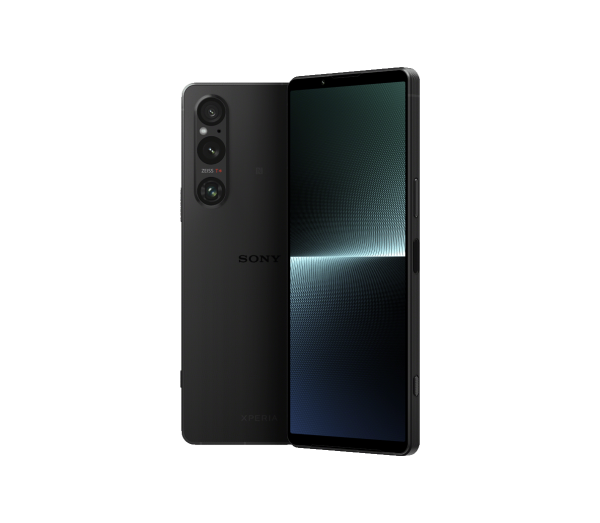
The mid-range is an ultra-competitive market. It is undoubtedly the market most flooded with smartphones: all brands offer at least one model. Sony is one of these brands, with its Sony Xperia 10 V.
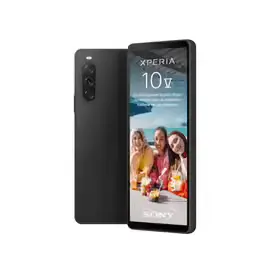
Sony Experia 10V
Your content goes here. Edit or remove this text inline or in the module Content settings. You can also style every aspect of this content in the module Design settings and even apply custom CSS to this text in the module Advanced settings.
The brand is known for its smartphone photo capabilities. They are, after all, the ones that provide the sensors for the vast majority of smartphones on the market. However, last year, the brand disappointed us on this point. With the new 48 MP sensor, however, things should change somewhat.
Design and packaging
Sony smartphones stand out somewhat from the competition, due to their design and, above all, their unique format. This is still the case with this Sony Xperia 10 V. However, the design of this smartphone represents the start of a trend which makes us somewhat upset.
The back of the Xperia 10 V is made of plastic. It is a less noble material than glass, certainly, but which provides more solidity to the smartphone. The back won’t break on the first fall, which is always nice. Additionally, if treated well, plastic can feel very good in the hand.
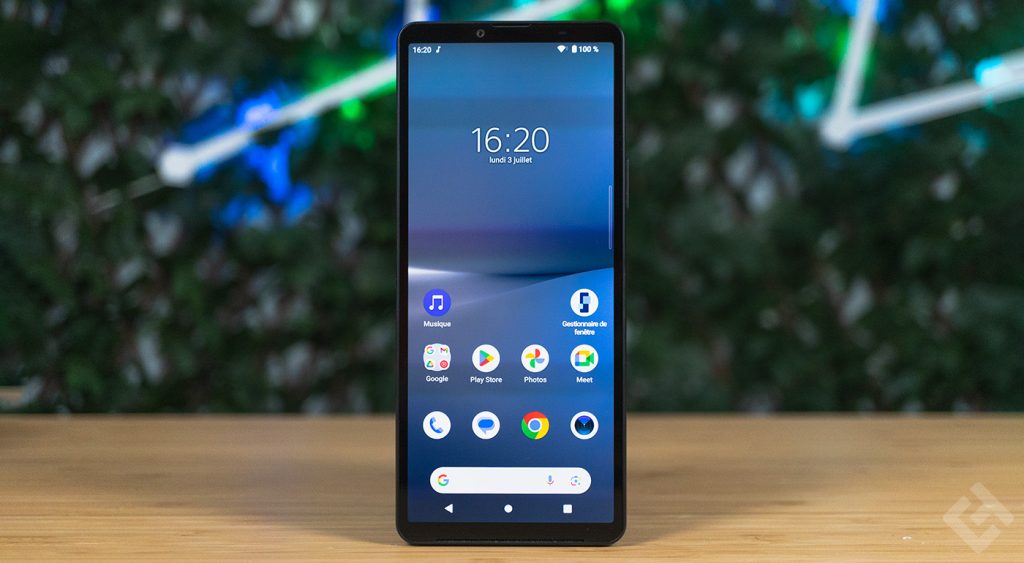
If the smartphone is available in several colors, ours is matte black which I find quite elegant. The coating on the back offers a rubberized effect, pleasant to the touch. The brand seems to have made a real effort regarding fingerprints, which are much less visible than last year.
It is on the back that we can see the photo module, made up of three sensors. The latter barely protrudes from the smartphone, which allows it to be placed on a table without it being wobbly. Above the photo module is a small flash.
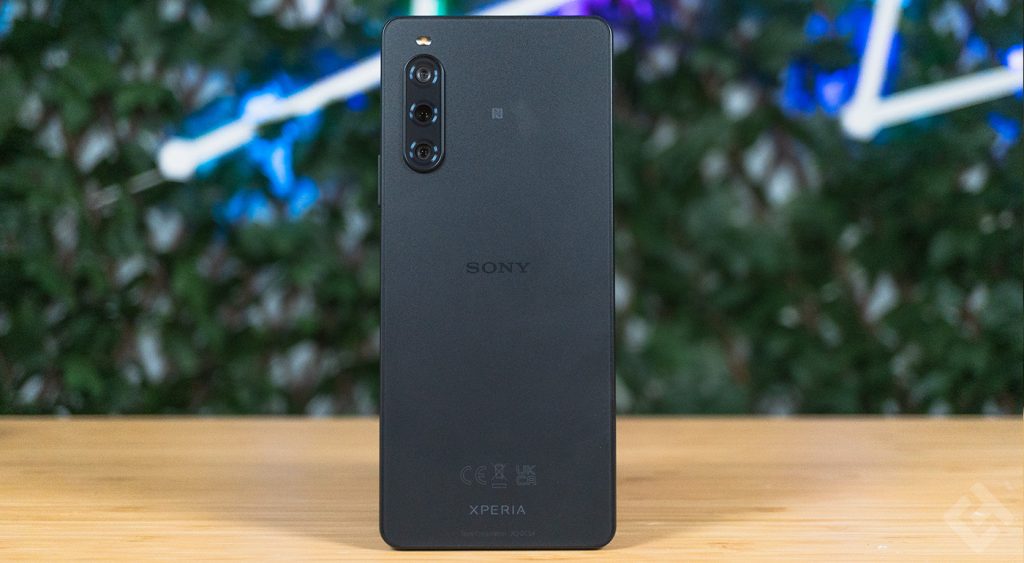
You will no doubt have noticed that it is exactly the same design as last year. Sony has, so to speak, used exactly the same chassis, down to the smallest detail. And it’s not just about the back.
In fact, the smartphone has the same very slightly rounded flat edges as those found on the Xperia 10 IV . On the right, we can still find the volume controls as well as the lock button. The latter also serves as a fingerprint sensor.

On the left is the SIM drawer. As with all Sony smartphones, the latter does not require any tools to be removed. Instead, it can be simply popped out with your fingernail. This is practical if you want to quickly change micro SD cards, since yes, the smartphone still offers this functionality.
On the top it is possible to find a 3.5 mm jack port, always appreciated on a smartphone, especially at this price. We don’t all want to pay a lot for a pair of wireless headphones, so it will be possible to use the wired alternative without an adapter. Finally, nothing stops you from using your excellent Sony WH-1000XM5 if you wish.
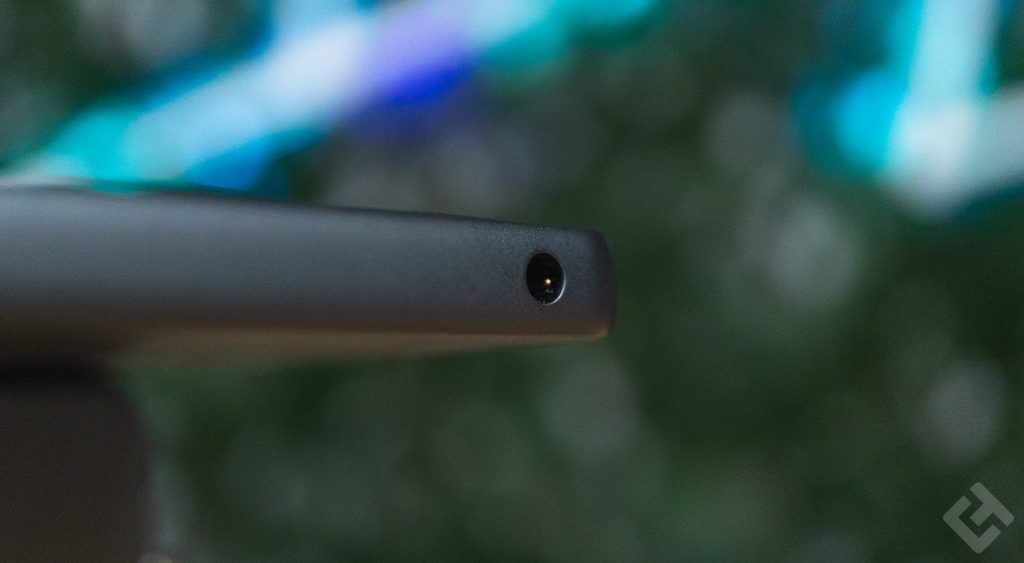
Concerning the screen, the latter is in 21:9 format. This explains the particularly elongated format of the smartphone. Its edges are quite thick and accommodate two speakers directed at the front. The latter should, theoretically, make it possible to obtain a better sound experience.
We have already commented on the elongated appearance of this Sony Xperia 10 V, but here are its full dimensions:
- 155mm length
- 68mm wide
- 8.3mm thick
The dimensions are not quite the same as last year. We gained 2 mm in length and 1 mm in width. This is a shame, since it makes the previous generation cases obsolete.
The weight is also very slightly lower. We are on 159 grams, compared to 161 for the Xperia 10 IV. The three grams less should, however, not be particularly noticed.
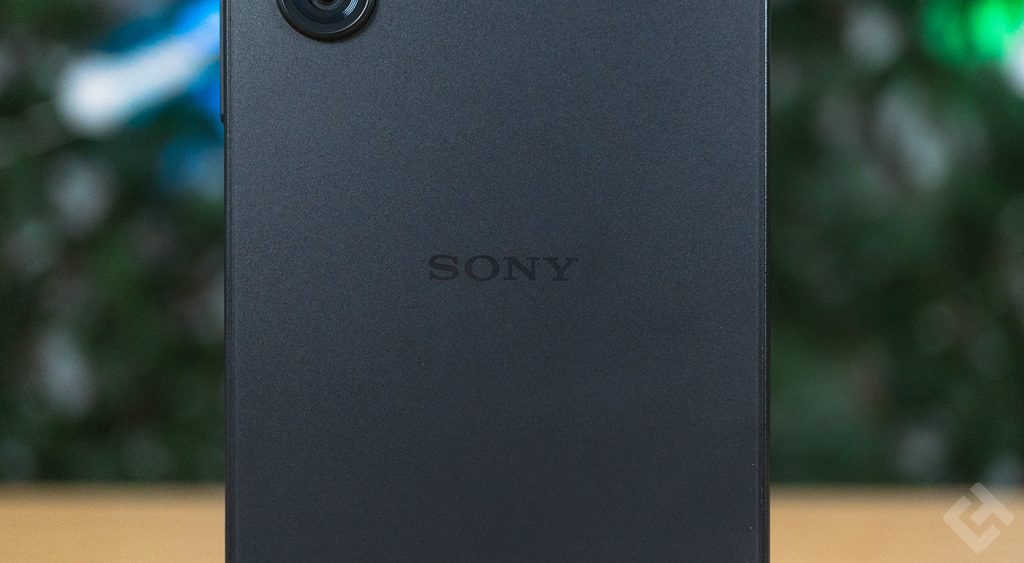
However, let’s finish with a few words on the packaging. For €450, you only buy the smartphone, without cable or charger. It’s indecent, really. When you put 1000€ into a smartphone, adding 30 for a charger is not a problem. Here, 30€ is already a good fraction of the price.
Thus, the Sony Xperia 10 V is still a smartphone with a simple, sober aesthetic and an original format. However, I wish I didn’t have to repeat what I already said last year, word for word. We are really on exactly the same design, within 3 mm.
Xperia 10V Features
Xperia 10V performance
If Sony didn’t take any risks on the design, they unfortunately didn’t take any risks on the performance either. We find exactly the same SoC as last year, which is a shame. This was already the downside of the Xperia 10 IV, why put it back in the Sony Xperia 10 V?
Finally, the SoC that this Xperia 10 V integrates is a Qualcomm Snapdragon 695 5G, with an octacore processor composed of:
- 2 Kyro 660 cores @ 2.2 GHz
- 6 cores Kyro 660 Silver @ 1.7 GHz
Concerning the GPU, it is still the Adreno 619. It will therefore be sufficiently efficient for everyday tasks, but fair enough for heavy gaming. However, it should be enough to power the Android interface, unlike what we find on the Nokia C22.
As for RAM, there is a change. If we still find a 6 GB variant, like last year, Sony also offers an Xperia 10 V equipped with 8 GB. This will allow you to launch more applications and be able to practice multitasking better, which is always appreciable.
Finally, for storage, the device still has a 128 GB UFS chip, which is always unfortunate. Even the cheapest smartphones offer better, with the Realme 9i 5G , equipped with UFS 2.2.
Last year, we were talking about fair technical specifications for a smartphone at this price. This time, I think we can say that it’s a daring choice on Sony’s part. I would really have liked to see an update of the characteristics in order to have a more efficient smartphone in my hands.
The choice is undoubtedly inspired by Apple, which has not updated its SoC on the iPhone 14. However, if Apple can afford to do so, it is because their chips are extremely powerful and, above all, with high-end performance. This is not necessarily the case with this Snapdragon 695.
CPU performance
Unsurprisingly, we obtain the same scores as last year, with an Xperia 10 V which is somewhat disappointing. At the same time, our expectations have never been high from this Snadrapgon 695 5G
| Sony Xperia 10V | Sony Xperia 10 IV | Pixel 7a | |
| GeekBench Single Core | 645 | 636 | 1460 |
| GeekBench Multi Core | 1985 | 1860 | 3646 |
| Antutu CPU | 122735 | 122631 | 225958 |
| PerformanceTest Cross Platform | 7189 | 7177 | 15079 |
The smartphone struggles to exceed 1900 points in multi-core on Geekbench 6, which is really not incredible. For reference, the Pixel 7a offers almost 4000 points on the same benchmark.
RAM and Storage Performance
Our Sony Xperia 10 V has 6 GB of RAM and 128 GB of storage. The latter can be expanded using a microSD card. RAM, for its part, does not offer the SWAP function.
As for performance, it’s not particularly bad on the RAM side. The speeds are high enough to multitask and not feel slow. However, this is nothing exceptional
| Sony Xperia 10V | Sony Xperia 10 IV | Pixel 7a | |
| RAM – Read speed | 2914 MB/s | 2912 MB/s | 2939 MB/s |
| RAM – Write speed | 2908 MB/s | 2905 MB/s | 3113 MB/s |
| Latencies | 34.7 ns | 33.5 ns | 51.7 ns |
| Storage – Read Speed (Performance Test) |
224 MB/s | 285 MB/s | 721 MB/s |
| Storage – Write Speed (Performance Test) |
272 MB/s | 291 MB/s | 465 MB/s |
| Storage – Read Speed (CPDT) | 286 MB/s | — | 1290 MB/s |
| Storage–Write Speed (CPDT) | 486 MB/s | — | 167 MB/s |
When it comes to storage, on the other hand, we have clearly seen better. Sony’s choice to save on this point is really questionable, especially when the competition offers much better for the same price.
G PU performance
Again, no surprise, the Adreno 619 of the Sony Xperia 10 V is just adequate. It does the best it can and will be perfect for powering the Android interface. It will even be possible to play some light games, with simple graphics.
| Sony Xperia 10V | Sony Xperia 10 IV | Pixel 7a | |
| Slingshot | 4092 | 4098 | 7192 |
| Sling Shot Extreme | 2948 | 2942 | MAX |
| Wild Life | 1206 | 1216 | 5646 |
| Wild Life Extreme | 360 | 362 | 1854 |
| Wild Life Stress Test | 1204 | 1221 | 5520 |
| Wild Life Extreme Stress Test | 362 | 364 | 1675 |
| Antutu GPU | 105887 | 105889 | 193279 |
However, we can note that the smartphone heats up relatively little, which is quite pleasant. This also translates into consistent performance and a smartphone that does not slow down to avoid overheating during prolonged use.&
Xperia 10V screen
The Sony Xperia 10 V screen has a 6.1-inch diagonal OLED panel. This supports up to 1 billion colors, which is a positive point. The presence of OLED on a relatively accessible smartphone is always appreciable.
This panel has a definition of 2520 x 1080 pixels, or FullHD+ in 21:9 format. This is pretty standard and also what you find on most smartphones these days. At this size, that brings us to a pixel density of 449 PPI, which is excellent.
In terms of brightness, we are at around 1000 nits peak, which is a clear improvement compared to the previous year. The screen is relatively well visible in all conditions, although you will have to adjust the brightness all the way up quite often.
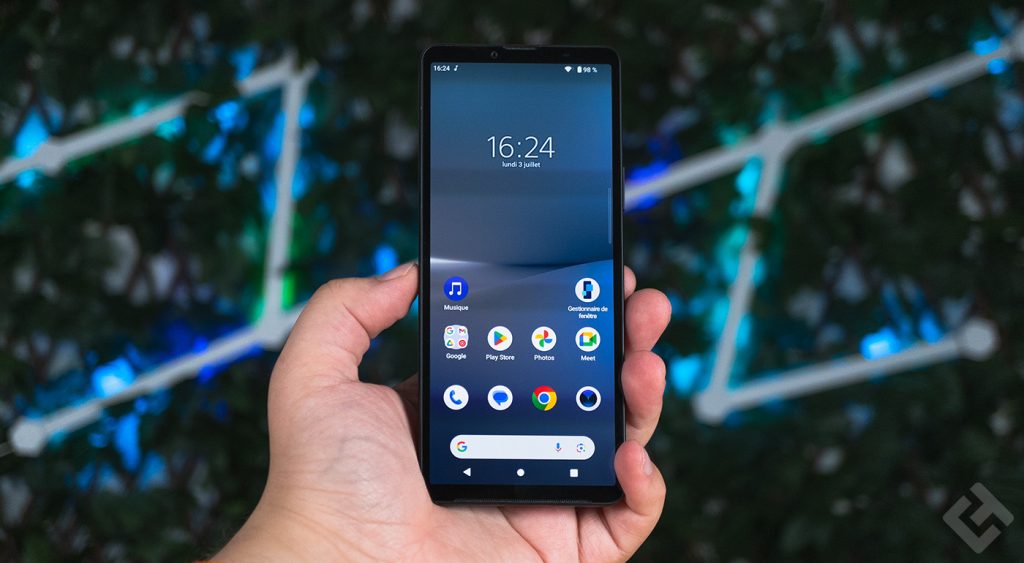
What disappoints us is the refresh rate. My rule is that for more than €350, 90 Hz is an obligation. Many smartphones can do this, so why not all? OLED or not, 60 Hz is struggling to make the transition to 2023.
Finally, we can be reassured with the complete coverage of the DCI-P3 gamut. The Xperia 10 IV was satisfied with 97%, this time we are at 100%. This does not guarantee precise colors, just their number, which is higher.
As always, it is possible to adjust the color temperature from the settings. It’s also possible to switch between a vivid mode, with vibrant colors, and a standard mode that focuses more on precision.
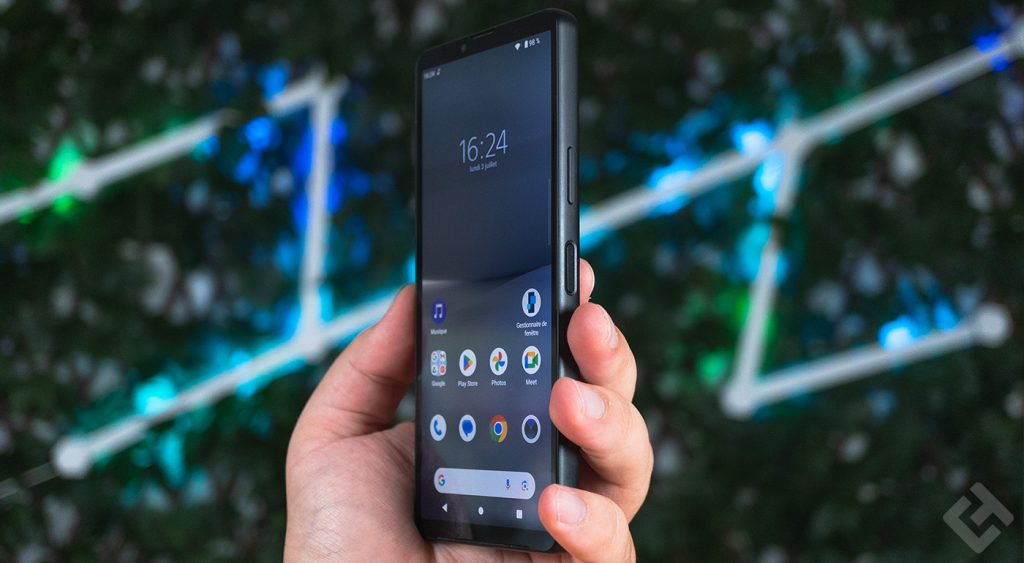
In use, the Sony Xperia 10 V screen is seriously handicapped by its too low refresh rate. When you’re used to 90 Hz, going back to 60 Hz really hurts. This is definitely something that needs to change on the next model.
The 21:9 format takes some getting used to. Everything is very high, which is disturbing at first glance. Banding may also be visible on most videos, whether on YouTube or otherwise.
Overall, if the screen is not to be thrown away, it remains below our expectations, particularly with regard to the refresh rate.
Xperia 10V camera
Sony smartphones are known for their photo capabilities. You can therefore understand our surprise at the fairly average results offered by the cameras included in this smartphone.
The Xperia 10 V has three cameras on the back, a 48 MP main sensor, an 8 MP ultra-wide-angle sensor and a telephoto sensor, also 8 MP. They all have an f/2.2 aperture, except the main sensor which is at f/1.8.
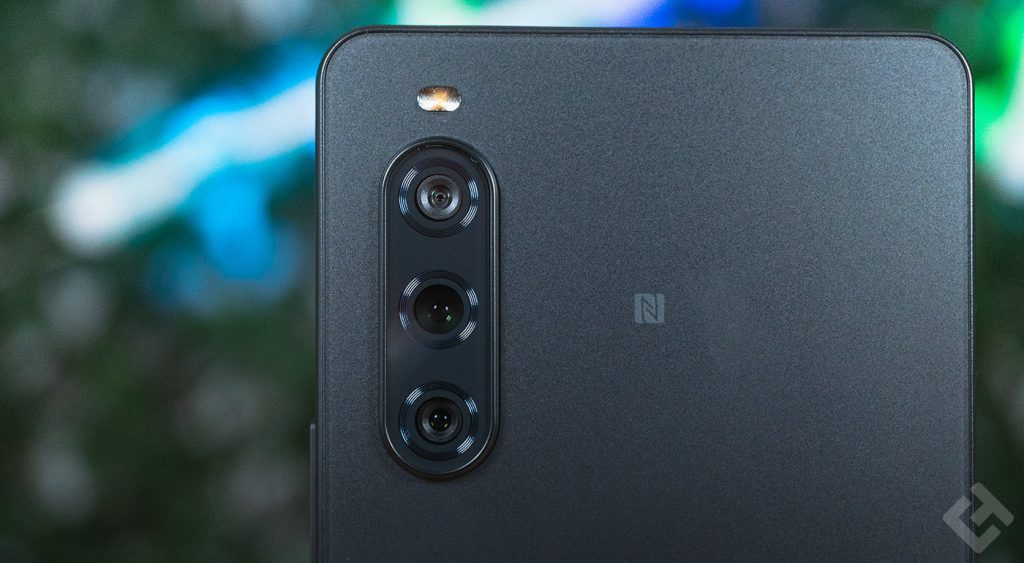
As for the front camera, the latter has a sensor with a resolution of 8 MP, with an f/2.0 aperture as well as a focal length of 27 mm, which will still take selfies quite well. tight.
The camera app offers features such as:
- Night mode
- Slow motion mode
- Fashion portrait
- Creative filters
- A manual mode
- Panoramic photos
Manual mode gives you more control over settings like ISO, shutter speed and exposure compensation. It is also possible to manually adjust the focus and white balance.
Portrait mode lets you choose the distance to the object, much like a focus ring on a camera lens. This brings more granularity to a mode that is usually fully automatic.
Automatic photo
For now, if on most points the Sony Xperia 10 V does not change in any way compared to the previous generation, we really cannot say the same for photography. The new main sensor, with much higher resolution, does a very good job.



Photos taken with a Sony smartphone are rarely the most popular. They don’t have that contrasting, vibrant look that the Huawei P60 Pro can offer, for example. Instead, we find photos that focus on color accuracy, as well as a natural rendition of lighting conditions.
For the colors, it’s a success. It will be necessary to do a little editing so that the photos are “Instagrammable”, by making the colors very slightly more vibrant. However, they are more than precise. Concerning the brightness, I sometimes would have liked a slightly greater dynamic range, but it remains very good.



Pique level, it’s very good. The difference compared to the previous year’s sensor is clear and, above all, easily noticeable. It’s a smartphone that’s more than capable of photography, especially if you like to do a little editing.
Photo zoom
The Sony Xperia 10 V has a telephoto sensor, which is often overlooked on smartphones in this price range. This is, for once, an addition that I really appreciate. I find the latter much more useful than the wide-angle sensor, even if ideally you should have both.
The resolution of the latter is lower, at only 8 MP. The transition from the hand sensor is felt. The quality of the zoom shots is far from remarkable, but it is not unsatisfactory. It’s a little better than digital zoom, but not incredible either.

x1

x2

x5

x10
The advantage of telephoto photography is that you can zoom further with less loss of quality. In the case of this Xperia 10 V, it is possible to go up to x10, which is not so impressive considering the x8 of the Pixel 7, for example. However, the quality remains linear, regardless of the zoom.
The feeling is similar regarding the wide-angle sensor. Like the telephoto, the latter has a resolution of 8 MP and is significantly lower than the main sensor. However, the photos it takes are not bad, although the low resolution can be felt in the details. Finally, we do not take wide-angle photos for details.
Overall, whether in automatic or zoom, Sony has made significant progress in photo capabilities, especially compared to the previous model. This one was indecent, especially coming from the brand which supplies all the photo sensors for almost all smartphones on the market.
Video
We rarely talk about video quality on Android smartphones, simply because it’s more or less the same thing every time. The quality is decent for family keepsakes, but unusable for anything important.
However, I think it is important to mention the subject on this Sony Xperia 10 V. Indeed, it is limited to 1080p, 30 fps. In 2023, this is unacceptable. The worst part is that the sensor could film at a higher resolution, or at least a higher frame rate. The limitation therefore comes from the SoC.
Not only does Sony’s indecent choice to use the same SoC that we criticized last year makes the smartphone slow, it prevents it from taking full advantage of its video capabilities. A big rethink on the part of the design team must be put in place, because it’s really shameful, especially coming from a brand like Sony.
Xperia 10V interface
Sony is one of the rare brands to maintain the “Stock” Android aspect in its interface, and the Sony Xperia 10 V is no exception. Everyone has their own tastes and colors obviously, but for now, I really like it. This goes hand in hand with the “smartphone for enthusiasts” aspect that the brand exudes.
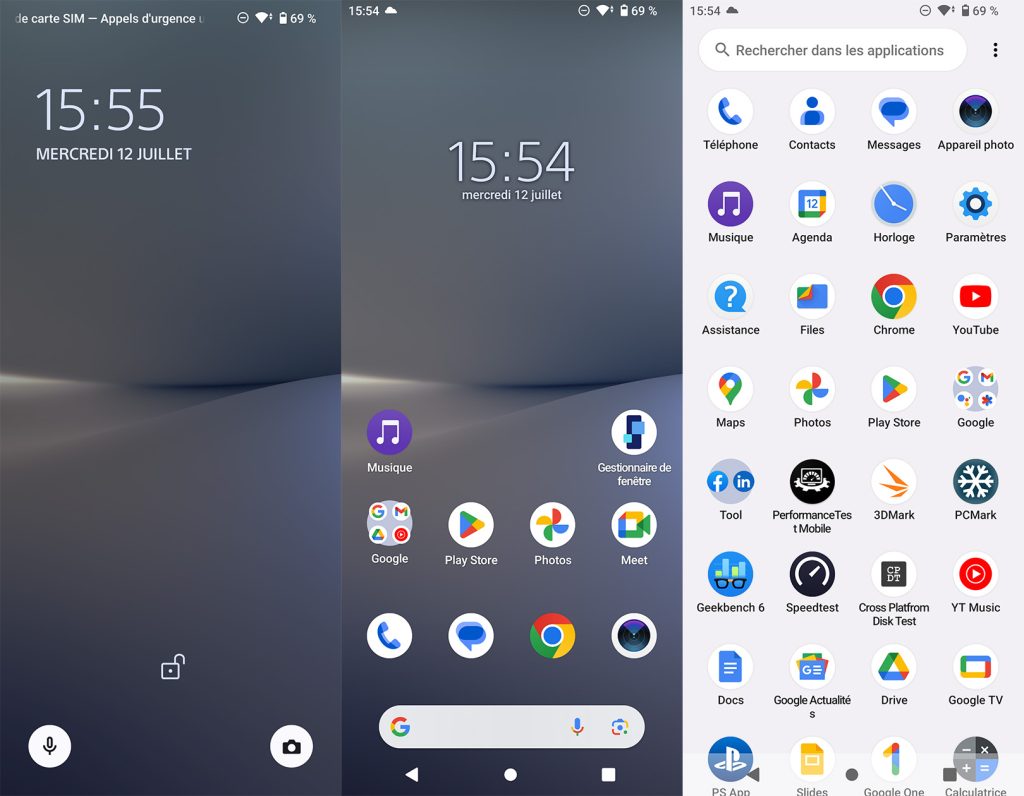
So, no redesigned menus, no changed icons, no customized experience. The vast majority of the system, apart from a few details, offers the default Android user experience.
I like the small number of preinstalled apps. Essentially, we find nothing other than the Play Store and a few Google applications, such as the phone or the Messages application. The same cannot be said for all smartphones, like the Honor Magic 5 Pro, for example
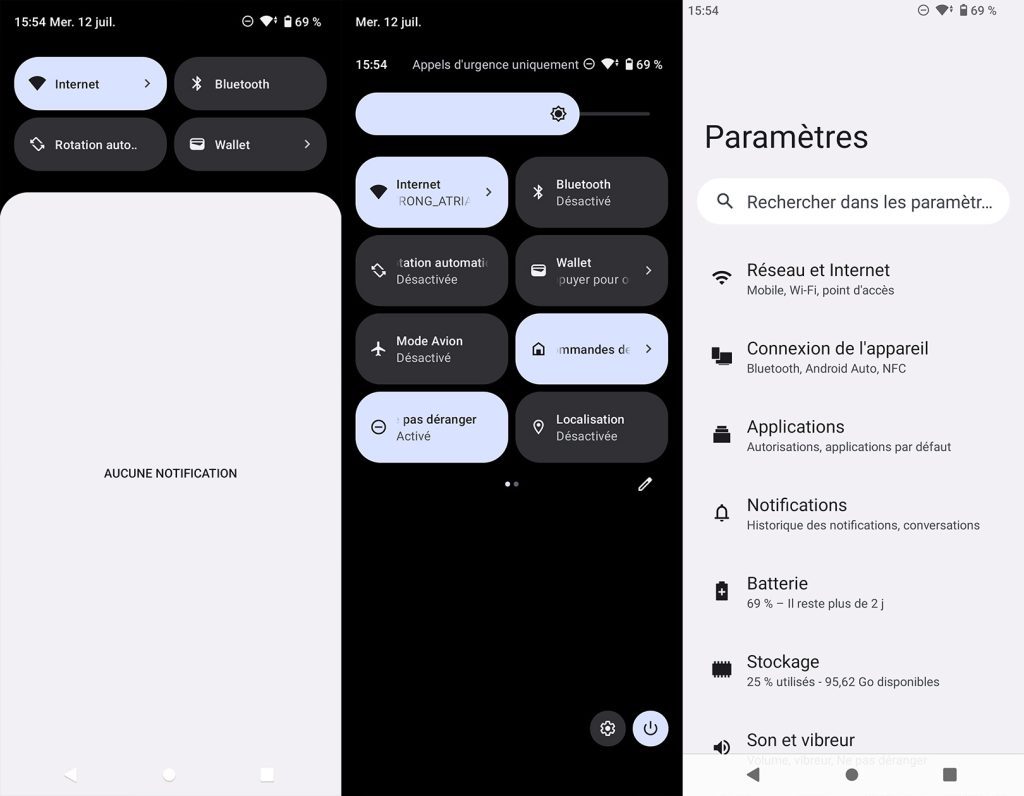
Concretely, the navigation is fluid, the experience is basic, but will appeal to those looking for a simple and sober interface and the absence of a significant number of preinstalled applications will allow you to take full advantage of the internal storage.
Sound quality of the Xperia 10 V
In terms of sound quality, our expectations are still quite high. Few smartphones dedicate so much space to their speakers and insist on putting them on the front to offer the best experience. And yet, Sony does it on the Xperia 10 V.
You shouldn’t expect too much either. It remains a smartphone, affordable and compact at that. In short, below 150 Hz, we hear nothing. At 150 Hz, we perceive a peak with a drop between 200 and 400 Hz then a gradual rise, reaching a ceiling around 600 Hz. Beyond that, we lack the equipment and auditory precision to make a decision, apart from confirming that the frequencies are audible
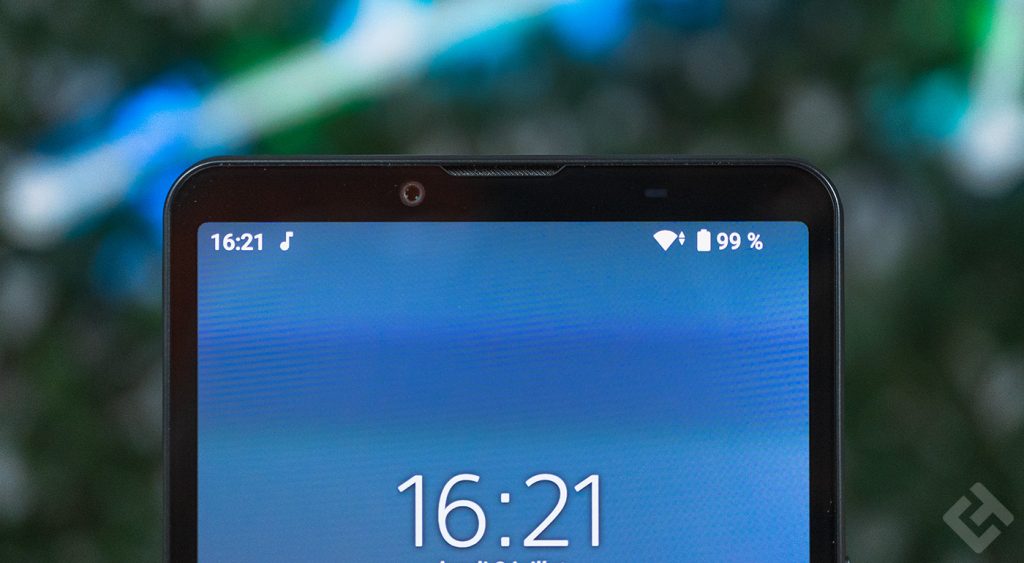
In more human terms, the sound is quite fine. The only frequencies that we really hear are the mids and highs, with a very small peak in the bass, which has no real consequence.
So, the majority of instruments and vocals are in the mids and highs, so everything should be heard fine, however, the lack of bass makes the sound feel thinner. He lacks body, support.
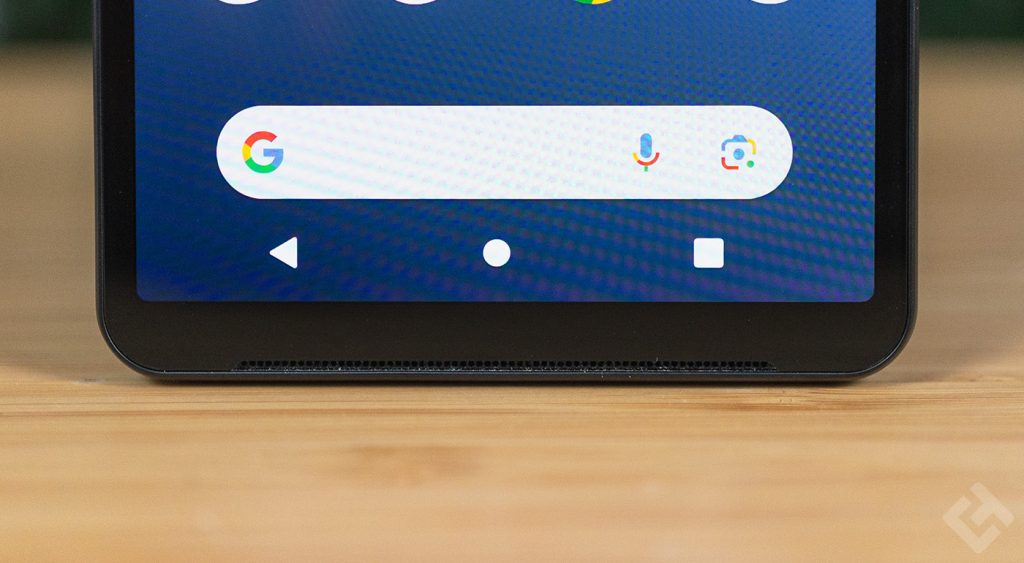
Concretely, it’s not bad for a podcast or for a series where sound is not essential. Technically, dialogue-heavy films should be very pleasant to listen to, since the lack of bass will clear out the vocals. However, for music you can forget.
Note, however, that the front speakers provide astonishing spatialization for a rather small smartphone. This makes us regret even more that almost all brands have abandoned this concept.
Xperia 10V Connectivity
On the connectivity side, again we have relatively few changes on this Sony Xperia 10 V. In fact, all the internal components are identical to the previous year, except for the photo sensors.
We still find 5G, fortunately since it is mentioned in the name of the SoC. All important frequencies are supported, including the core frequency of 5G in France.
| 2G | 850/900/1800/1900 |
| 3G | 1, 4, 5, 8 |
| 4G | 1, 3, 4, 5, 7, 8, 20, 28a, 28b, 38, 39, 40, 41 |
| 5G | n1, n3, n7, n8, n28a, n28b, n38, n41, n77, n78, n79 |
As for Wi-Fi, we only find Wi-Fi 5 ac. No Wi-Fi 6 , let alone Wi-Fi 6E . It’s a shame in 2023, although we can still accept it in a mid-range. That being said, next year I expect at least Wi-Fi 6.
To connect your headphones, you will still have to make do with Bluetooth 5.1 . For now, this is regrettable, since it will not be possible to benefit from the improvements in terms of efficiency and sound quality, introduced with Bluetooth 5.2 . Finally, it remains possible to use the aptX HD and aptX Adaptive codecs. The smartphone has NFC.
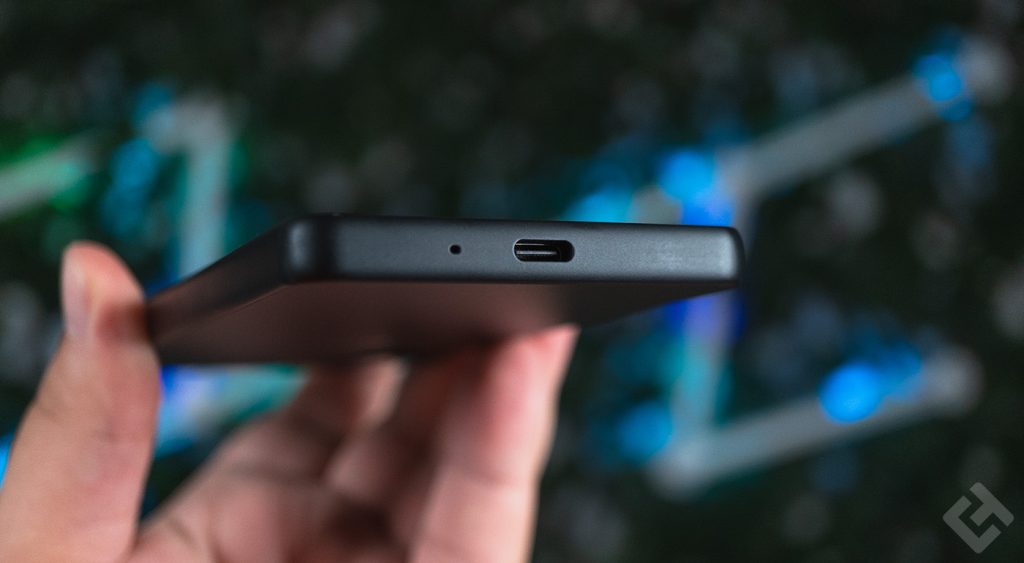
As for the physical connectors, we initially find a USB-C at USB 2.0 speeds. It’s quite slow, but also not critical. Not many people connect their smartphone to their computer anymore.
It is also possible to observe a 3.5 mm jack connector, which is quite important on a smartphone at this price. It will allow you to benefit from better quality headphones for a lower price and, above all, lower energy consumption compared to Bluetooth 5.1.
It is therefore one more year with an outdated modem that the fifth edition of the Sony Xperia 10 will have to endure. This is something that absolutely must change in the next generation.
Battery life of the Xperia 10 V
Autonomy was already excellent on the previous generation, it is still just as good this year. The battery capacity is unchanged, we are still confident of 5000 mAh, which is the standard on an Android smartphone these days.
We can easily achieve more than 24 hours of screen time, with not too intensive use. We are not far from the 27 hours promised by the iPhone 14 Pro Max , which nevertheless costs much more.
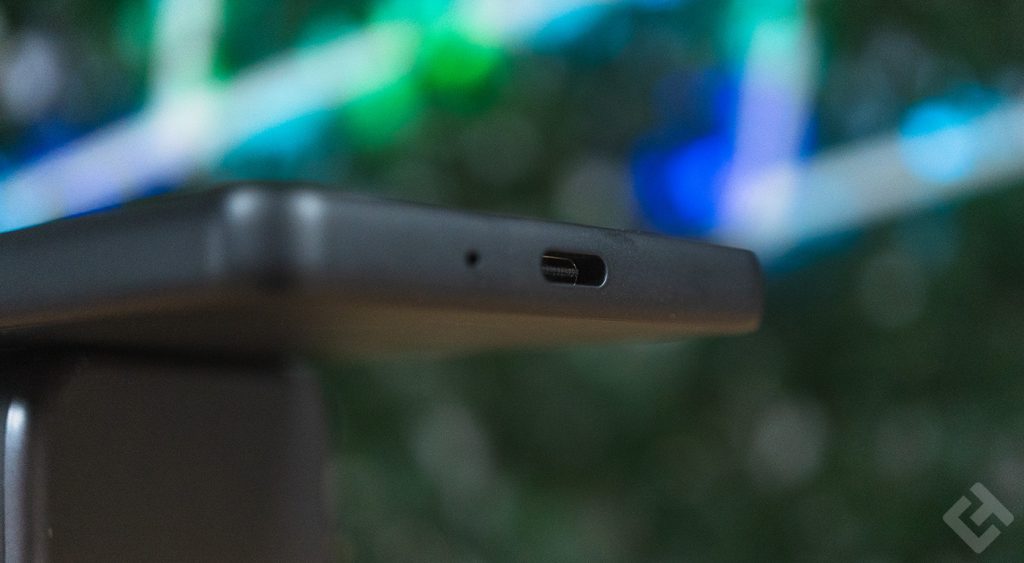
This great autonomy is, in part, enabled by ultra-low consumption components. They are not very efficient, of course, but this allows them to consume very little energy. The result is therefore autonomy worthy of the name.
For recharging, this is significantly faster than the previous year. However, it remains quite slow overall, we are far from the 150W of Realme and other Chinese manufacturers. Well, at least recharging doesn’t take 4 hours.
In short, autonomy is still the strong point of the Sony Xperia 10 V. This time, charging is not even that slow, which is greatly appreciated.
Locking and security
The Sony Xperia 10 V is equipped with a fingerprint sensor, positioned under the lock button, present on the right side of the smartphone. In our eyes, it is the best choice for entry-level and mid-range smartphones.
This sensor is fast and accurate. At the same time, it is a technology that we have been using and continuing to develop for several years.
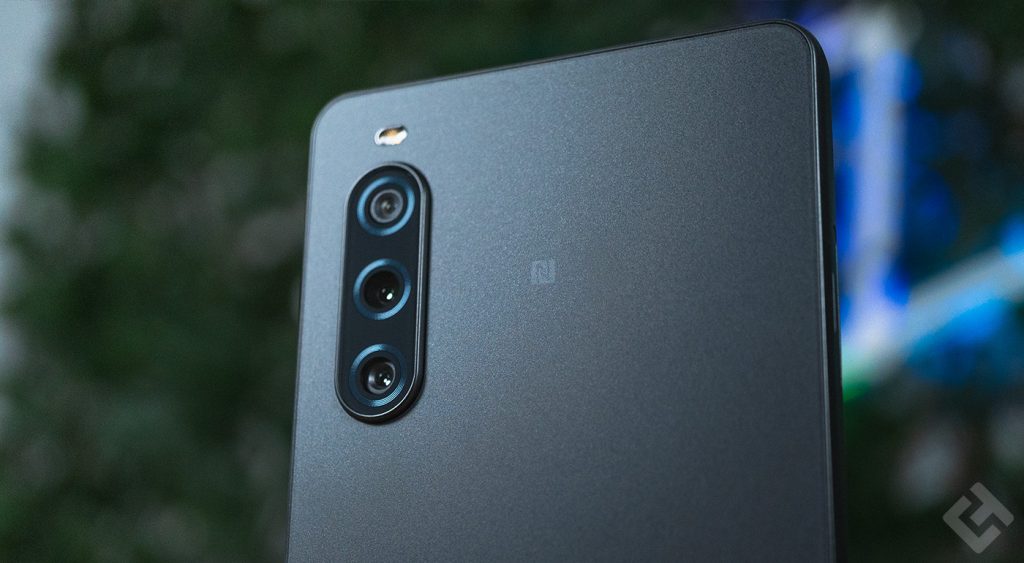
Sony also offers the Smart Lock feature, which will keep the smartphone unlocked if you are near your connected watch, or if you are at home. Although the idea is not bad, we do not recommend activating automatic unlocking based on your geographic location, for obvious security reasons.
There is nofacial recognitionon this smartphone and, in reality, that’s a good thing. If he was present, the latter was based on a simple comparison of photos, meaning nothing very secure.
This choice will surely displease more than one person, but we salute Sony for having prioritized security, before offering more features. Finally, all the same, for maximum security, do not use Smart Lock.
Sony Xperia 10 V review: Reviews
The Sony Xperia 10 V seems to be a new generation offered by the manufacturer simply with the aim of creating a new smartphone. When the only differences compared to the previous year are a better photo sensor and a 0.1 inch larger screen, can we really talk about a new generation?

The choice of SoC is indecent and limits the capabilities of the smartphone, both in terms of raw performance and its video capabilities. Finally, not including a charger on a mid-range smartphone doesn’t work at all.
If you really want a Sony Xperia 10 V, it is available for €450. It’s much too expensive for dated specifications, a screen only 60 Hz and a smartphone whose only real strong point seems to be autonomy.
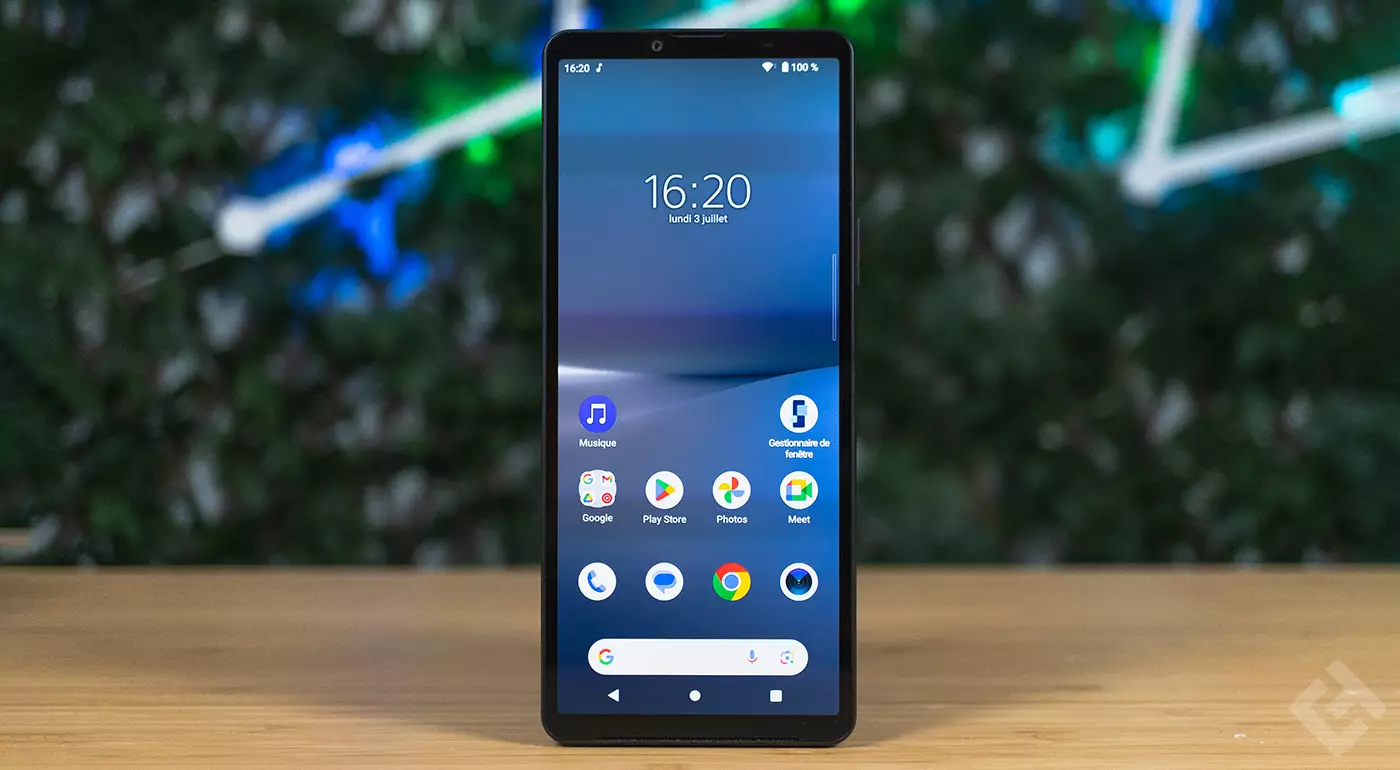
Performance |
|
Screen |
|
Camera |
|
Autonomy |
|
Software |
|
Getting started |
We love |
We like less |
|
|
|
No real evolution compared to the |
previous generation |
|
|
|
|



